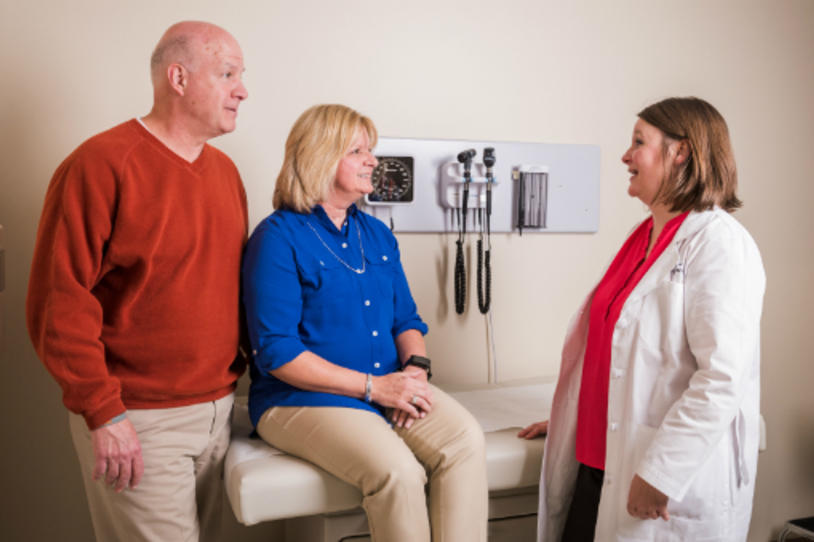
Deep brain stimulation (DBS), a surgical treatment for Parkinson’s symptoms, can be extremely effective to lessen symptoms and medication needs. But some people have less than optimal results, and many people wonder when the best time is to consider this surgery and if and how it may affect their mood or personality. Learn more about DBS in a video from my Ask the MD series.
To minimize uncertainty, address fears and deliver the therapy as optimally as possible, The Michael J. Fox Foundation (MJFF) is funding a registry to learn more about how best to deliver and use DBS.
We spoke with Joohi Jimenez-Shahed, MD, associate professor of neurology and director of the DBS program at Baylor College of Medicine in Texas and principal investigator of the DBS registry, to understand the goals of the registry.
MJFF: What is the DBS registry?
Joohi Jimenez-Shahed (JJS): The DBS registry is a way for clinicians to get a better understanding of how patients perform with this surgery and why they have the outcomes they do. DBS is a great therapy and helps many patients. But we don’t have a clear understanding of why some patients have a better response than others. By capturing data directly from a large group of patients who undergo DBS and their clinicians, we can find patterns and study them further to guide treatment decisions and improve patients’ outcomes.
MJFF: Why is the DBS registry important?
JJS: We understand a lot about DBS, but there is a lot we don’t have a good handle on. There are a lot of “moving parts” with DBS -- people have different symptoms and undergo the procedure at different points in their course of disease, and brain leads are implanted in different places. Some people get surgery awake and others asleep, and programming is an individualized procedure with many different options. We haven’t looked at these variables in a systematic and structured way. The registry will collect comprehensive data from patients and clinicians over time and in the “real world.” By seeing what differences there are in outcomes and why they occur, we can better understand what treatment decisions are best for individual patients.
The registry also will allow us to answer multiple questions at one time. Clinical trials are structured to answer only one or two questions at a time, and sometimes there is difficulty applying the findings to different patients. By gathering a wide array of information from a large, diverse group, we can answer a lot of questions at once about this therapy.
MJFF: What types of information will the registry collect?
JJS: We’ll collect data from both clinicians and patients. Patients will complete questionnaires about their mood, behavior, walking, falls, quality of life and much more. Clinicians will measure their patient’s movement symptoms and memory and thinking skills with standardized testing. They’ll also report how surgery is done (awake or asleep), share brain images that show exactly where leads are implanted, and provide programming settings.
Information will be gathered during the initial evaluation visits, at surgery and then at regular intervals for five years. We plan to enroll 500 patients across 20 sites in the United States and Canada. This project will involve “all comers to DBS” -- anyone who is considering the surgery at any time in the course of their disease. In this way, it will give us a “real world” look at how different patients do with DBS. The number of patients included, the different types of data we’re collecting and the ability to track changes over time make this a strong and unique study.
MJFF: What will you do with the data?
JJS: We’ll look at all of this information in real time. In some studies, data is gathered and someone later looks at and interprets it. With the DBS registry, we will meet at regular intervals during the study to evaluate outcomes and understand variances and the possible reasons behind them. There will be an active dialogue and continuous data analysis along the course of the study. Ultimately, we hope this data shows who has good results from DBS and why others have non-optimal outcomes. Our goal is to determine best practices or strategies to improve this treatment.
MJFF: What have you learned so far?
JJS: We’ve been in the planning and preparation stages, so most of the learnings have been around getting sites ready and enrolling patients. We plan to activate the first site in March 2019. There is a lot of enthusiasm from the sites; they are excited to have a more efficient way to talk about and be aware of what’s happening with their patients over time.
Part of the fun was in designing the project and finding the best measures to track over time. We may need to adapt those as the project moves forward, but that’s a learning, too.
Hear more from Dr. Jimenez-Shahed on DBS and another Parkinson’s surgery, focused ultrasound, on a webinar later this week. Register today and join us Thursday, March 21 at 12 p.m. ET.
